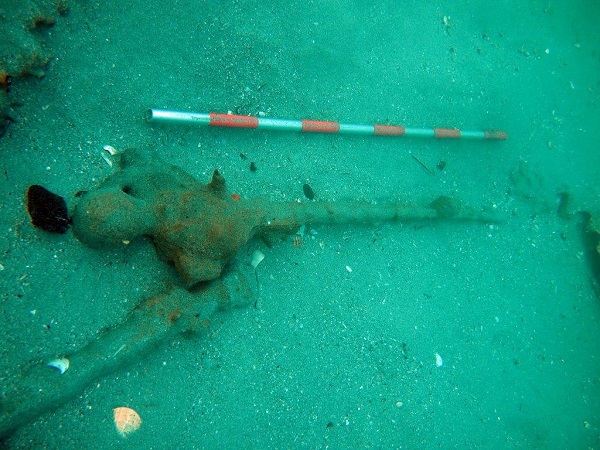Hello everybody!
Well, after an (undesired) eventful summer, the Finisterre team is back in business! We have not been able to carry out our planned fieldwork during the summer due to unexpected circumstances but, as we say in Spain, “better late than never”. The team is back in the water and we could not be happier about what we are discovering this season.
On the other hand, the summer was also very productive but in a different way. Although we did not get in the water, we conducted our planned research at the General Archive of Simancas (Valladolid, Spain). We located several original documents related to the organization, outfitting, ships, and fate of the 1596 fleet. What can we say? It is amazing to read the letters that Martin de Padilla wrote to Philip II, and many other documents which provide so much information about the fleet. Yes, archival research is one of the pillars of underwater archaeology for this period.

The General Archive of Simancas (400 km away from Finisterre and the North Atlantic Ocean). Yes, this is also underwater archaeology.
As I said, we intended to carry out the underwater survey during the summer but we had to postpone it. Then, we thought about October, but we had to postpone it again due to… guess it? The weather!!! Ironically, last October marked the 417th anniversary of the sinking of Padilla’s fleet, which was destroyed by a storm on October 28, 1596. Finally, we have been able to dive in November!
We must admit that we were not very sure about what we were going to find apart from very cold water (in Finisterre the water is cold in summer, and colder in fall). As we have mentioned in previous posts, the main problem we face when surveying this area is the thick layer of sand that covers the shipwrecks remains (not always). On the other hand, the sand ensures the protection (in theory) of the archaeological remains but makes more difficult our work. In any case, we went for our first dive and…
We found another iron cannon… Yes, the cannon had been covered by the sand but the storms have taken the sediment away since our last visit to this site! So, there it was. This has been our first “surprise” that has made us to forget about the low temperature of the water. But then…
A sword appears in front of us! Despite the concretion that covers it, its shape is very obvious. However, this is not the first sword we have found during our previous surveys at Finisterre so we are not that impressed. Okay, okay, we are…
But then we come across of a pewter porringer! (Another one?) I insist, this is the first dive of the season in order to assess the condition of the sites since the last summer, and to evaluate the impact of the storms that affected the area. If someone had told us what we were going to find, we would not have believe it. So far, so good but then, once again…
A metal helmet! Yes, the typical helmet that soldiers wore during this period. Unbelievable! Such an amazing dive. The season could not have started in a better way! So we have mapped and photographed the new finds while we are still wondering about what we are going to find next…
On the other hand, we cannot forget that the concretions on the artifacts reveal that they have been covered and uncovered periodically. So, what about the UNESCO recommendations in relation to the protection “in situ” of the underwater cultural heritage? We have no doubt that these sites illustrate perfectly the exception to this recommendation (http://www.unesco.org/new/en/culture/themes/underwater-cultural-heritage/protection/in-situ-protection/)
If you want to know what we found in our next dive, do not miss our next post. Here, at the INA blogs!
The Finisterre Team.






